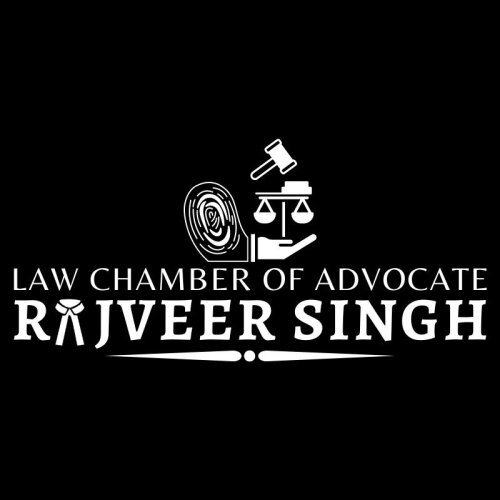Best Art & Cultural Property Law Lawyers in Mohania
Share your needs with us, get contacted by law firms.
Free. Takes 2 min.
List of the best lawyers in Mohania, India
About Art & Cultural Property Law in Mohania, India
Art & Cultural Property Law in Mohania is a specialized field focusing on the preservation, protection, and regulation of cultural artifacts, artworks, and historical sites. This legal domain involves issues related to the ownership, sale, and transfer of art and cultural property, both locally and internationally. Given India's rich cultural heritage and history, this area of law is particularly significant in regions like Mohania, where cultural assets are numerous and diverse.
Why You May Need a Lawyer
There are several situations where individuals or organizations might need legal assistance in Art & Cultural Property Law:
- Acquisition or sale of artwork to ensure compliance with national and international regulations.
- Protection and restitution claims of stolen or illicitly exported cultural property.
- Disputes over the provenance or ownership of historical artifacts.
- Legal advice for museums or collectors on exhibitions and loans.
- Guidance through cultural heritage laws for development projects impacting heritage sites.
Local Laws Overview
The laws governing art and cultural property in Mohania adhere to both national legislation and local regulations. Key considerations include:
- Antiquities and Art Treasures Act, 1972: Regulates the export and trade of antiquities and art treasures to prevent smuggling and illegal trade.
- Cultural Heritage Regulations: Local laws that protect historical sites and govern any alterations or use of such locations.
- Licensing: Specific licenses are required for the import, export, or trade of certain cultural properties to ensure they are lawfully acquired.
Frequently Asked Questions
1. What is considered a cultural property?
Cultural property includes artwork, antiques, manuscripts, books, and historical monuments, as well as intangible assets like languages and traditions.
2. How can I prove the provenance of an artwork?
Provenance can be established through documentation such as purchase receipts, auction records, or expert appraisals that trace the history of the artwork's ownership.
3. What happens if I find an archaeological artifact?
Under Indian law, any archaeological find must be reported to local authorities and handled according to regulations to ensure its preservation and legal compliance.
4. Can I export an antique without any permissions?
No, the export of antiquities and artworks requires permission from the Archaeological Survey of India and adherence to specific legislative guidelines.
5. How are disputes over artwork ownership resolved?
Disputes can be resolved through mediation, arbitration, or court proceedings, depending on the specifics of the case and the value of the disputed item.
6. Who is responsible for protecting cultural heritage sites in Mohania?
The Archaeological Survey of India, along with local governmental bodies, is responsible for the protection and maintenance of cultural heritage sites.
7. What are the penalties for illegal export of cultural property?
Penalties can include fines, imprisonment, and the confiscation of the illegally traded cultural property.
8. Can technology be used to trace stolen art?
Yes, digital databases and registries can help track and recover stolen artworks by matching them with reported thefts.
9. Are there any government initiatives for cultural property protection?
The Indian government has several programs aimed at the conservation and promotion of cultural heritage, offering grants and support for local initiatives.
10. How can I ensure my art collection is legally compliant?
Consulting with a legal expert specializing in art law can help verify the legal status and compliance of your art collection with relevant laws.
Additional Resources
For those seeking more information or assistance, consider the following resources:
- Archaeological Survey of India (ASI): Oversees the protection and maintenance of cultural heritage sites.
- National Museum, Delhi: Offers expertise in art conservation and provenance research.
- Local Cultural Affairs Offices: Provide guidance on regional laws and regulations affecting cultural property.
- Online Databases: Tools like the Art Loss Register can be vital in tracking stolen art.
Next Steps
If you need legal assistance in Art & Cultural Property Law:
- Contact a lawyer specializing in art law to discuss your situation. They can provide guidance specific to your needs.
- Research local laws and regulations to equip yourself with the knowledge necessary to navigate legal processes.
- Consider joining a professional organization related to art and cultural heritage to stay informed and connected.
Taking these steps can help you navigate the complexities of Art & Cultural Property Law effectively while safeguarding your interests.
Disclaimer:
The information provided on this page is for general informational purposes only and does not constitute legal advice. While we strive to ensure the accuracy and relevance of the content, legal information may change over time, and interpretations of the law can vary. You should always consult with a qualified legal professional for advice specific to your situation. We disclaim all liability for actions taken or not taken based on the content of this page. If you believe any information is incorrect or outdated, please contact us, and we will review and update it where appropriate.








